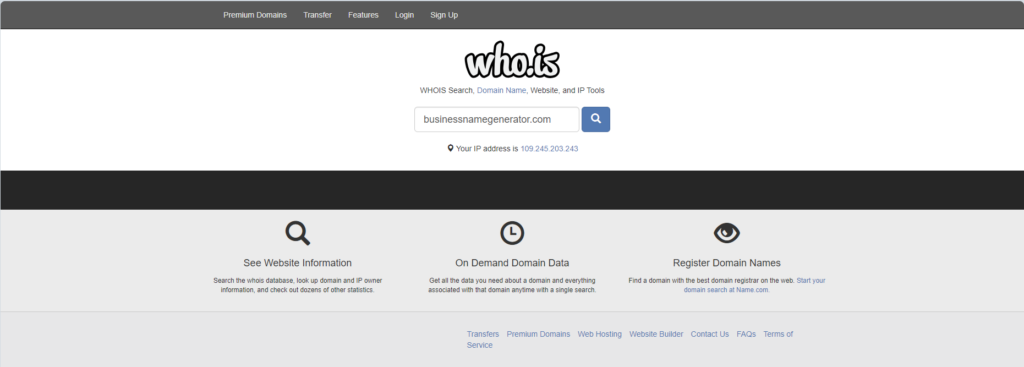You’re about to launch a website, establish your online presence, and expand your customer base. You’ve come up with a killer domain name that matches your brand values and describes your products and services perfectly. The trouble is, it’s highly unlikely you’re the first one with that idea.
According to some estimates from Forbes, there are about 1.13 billion registered domain names worldwide. That makes the chances of your domain name being open for registration slim. In this article, we’ll show you how to see if your domain name is available and how to choose a high-quality domain name.
How to Check Domain Name Availability
Before you start building a website and working on your branding, it’s important to know what your domain name will be. No two domain names are the same, and you can only pick what’s available to you. In other words, when you choose a domain name, you need to see if it’s available.
To do that, you need to do domain name search using domain availability checking tools, but don’t worry; they’re free. A checker, also called WHOIS lookup tools, can be used to see if the name is available and, if not, to get information about the registration, such as:
- Hosting servers,
- Length of ownership,
- Registrar used,
- Registrant contact information,
- Renewal expiration date,
- Domain name system (DNS) records.
To do that, you can visit who.is and enter the domain name you’re interested in.
If the name is taken (as is the case with our domain), you’ll find all the information we talked about above.
If the domain is available, the WHOIS lookup tool will report that the object you’re looking for doesn’t exist in the DNS, leaving it open for registration.
When you use our domain availability checker, you’ll see if your name is taken, but you can also learn about domain types in which your preferred domain name is available (i.e., what top-level domain is unregistered). For example, businessnamegenerator is unavailable in .com, .us., org, and .net, but you can use a .io domain.
If the name is available, you can begin the registration process. If that’s not the case, but you’re adamant about having it, use the lookup tool to learn who owns the name. You can contact the registrant and try to buy the domain name rights from them.
MORE: Learn how to value a domain name.
Common Mistakes to Avoid in Domain Name Selection
Despite the ever-changing trends in domain naming, one thing always remains the same – .com domains are the most popular ones. If you can’t secure one, you can get creative with your naming and choose an alternative extension that may suggest what your website’s all about. For example, if you use artificial intelligence in your work, a .ai domain might be the perfect choice for you.
Having said that, try not to get off the board too much. Cheaper (and free) TLDs attract spam sites, and being associated with an untrustworthy TLD negatively affects your SEO.
Aside from that, you should also make sure to avoid:
- Using hyphens, numbers, or any special characters,
- Long names,
- Inappropriate words when spelled together.
Registering Your Domain Name
Once you decide on a name and find that it’s available, it’s time to register it. To do that, you need to:
- Pick a registrar of your choice,
- Enter your domain name and select one with the preferred TLD,
- Complete the purchasing process,
- Renew the subscription once it expires.
If you want to learn more about the registration process, check out our in-depth guide on how to register a domain name or watch our video:
Takeaway Points
Picking a catchy domain name is easy; picking a catchy domain name that’s also available is not. When you want to register a domain, you need to check its availability first, and you can do that by using various checkers and lookup tools online.
Once you find a domain name that’s not taken, you can begin the registration process. If you need help coming up with a catchy, memorable name that will rightly represent your industry and products/services, use our AI-powered domain name generator to get unlimited name ideas you can fine-tune with advanced filters. The generator will automatically check availability and suggest the best extensions.


